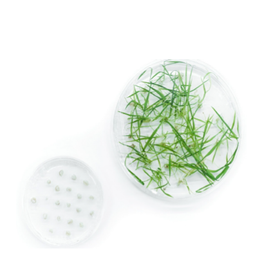Enzymes useful for the characterization and analysis of antibody-drug conjugates (ADCs).
Useful for the evaluation and analysis of important quality characteristics such as drug-antibody ratio (DAR), site occupancy, and in vivo changes of antibody-drug conjugates (ADCs).
<Introduction> Antibodies are challenging molecules to characterize due to their size and complexity. A compelling approach to combat diseases such as cancer is to conjugate drugs (payloads) to antibodies, but this further increases the risks of complexity and heterogeneity. Antibody-drug conjugates (ADCs), like other IgG-based biopharmaceuticals, require careful and detailed characterization and appropriate analytical workflows. The "FabRICATOR" product from Genovis allows for the digestion of ADCs into subunits, enabling detailed characterization of this complex class of drugs. Additionally, the endoglycosidases "IgGZERO" and "GlycINATOR" help reduce complexity and improve resolution, making intact ADC studies possible. [Genovis actively hosts web meetings and seminars. Please feel free to contact us for adjustments according to your needs.]
basic information
<Subunit Analysis of ADCs> The characterization of ADCs can be challenging due to the complexity of conjugated antibodies, which limits the resolution of LC-MS analysis at the intact level. The enzyme "FabRICATOR" is a site-specific protease that digests IgG just below the hinge region, making it useful for analysis at the intermediate level (fragment level) of native or conjugated antibodies. Simply incubating the ADC with "FabRICATOR" reduces it, generating small fragments (25 kDa) of Fc/2, Fc' sites, and LC site antibody fragments. This reduces complexity in high-resolution LC-MS at the intermediate level (fragment level) (Figure 1). The use of "FabRICATOR" enables the generation of homogeneous antibody fragments, allowing for the analysis of critical quality attributes (CQA) such as drug-antibody ratio (DAR), site occupancy, and in vivo changes of the ADC.
Price range
Delivery Time
Applications/Examples of results
<Evaluation of Intact ADC Characteristics> By trimming the N-linked glycans at the Fc region using endoglycosidases, it is also possible to further reduce the complexity of the samples and improve the characterization of ADCs. Specifically, by applying IgG-specific endoglycosidases such as "IgGZERO" and "GlycINATOR," the complexity due to major glycans in the ADC can be rapidly removed. Subsequently, by analyzing the intact ADC using various mass spectrometry (MS) techniques, it becomes possible to determine the drug-to-antibody ratio (DAR). The reduction of complexity achieved through this approach leads to improved resolution in the study of intact ADCs and has been applied by multiple research groups. Furthermore, by combining endoglycosidases with digestion using "FabRICATOR," it is also possible to further reduce complexity in strategies for intermediate-level (fragment-level) analysis.
Detailed information
-

Figure 1. Middle-level LC-MS analysis of trastuzumab site-specifically conjugated with MMAE (monomethyl auristatin E) using GlyCLICK. The antibodies were digested with FabRICATOR and reduced before the analysis showing a) native, b) deglycosylated, c) conjugated trastuzumab.
-

Figure 2. Schematic representation of intact LC-MS analysis of ADCs after deglycosylation using GlycINATOR.
catalog(3)
Download All CatalogsRecommended products
Distributors
Rohmatsu Trading Co., Ltd. engages in the procurement, research, and contracting of overseas chemical products, as well as providing information on them. From the top management to all employees, we unite as one, always keeping five keywords in mind, continuously striving for creativity and ingenuity, and serving the market to contribute to society.













































